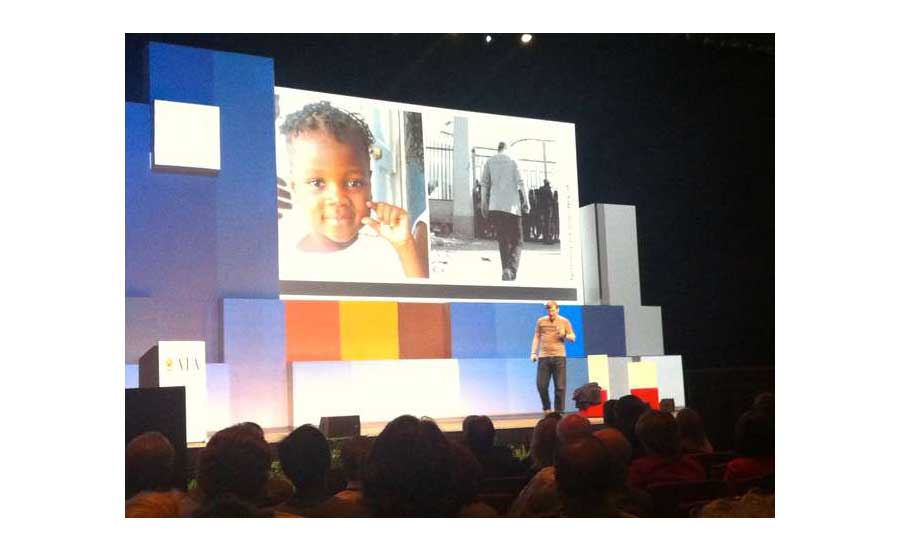AIA 2013: Cameron Sinclair Touts Architecture for Humanity Work, Urges Others to Follow

Part cheerleader and part pitch man, Cameron Sinclair speaks at the 2013 AIA convention in Denver.
Architects & Firms
Architects don’t just design buildings—they design solutions to some of the world’s most critical problems.
That was the message from Cameron Sinclair, co-founder and CEO—“Chief Eternal Optimist,” he likes to say—of Architecture for Humanity, who spoke at the AIA convention in Denver on Friday before a large and enthusiastic audience. Sinclair—dressed in jeans, T-shirt, and blue jacket (which he shed about halfway through his hour-long-plus talk)—was part cheerleader and part pitch man as he urged architects to help “transform communities” through public service architecture.
“What is the value of architecture?” Sinclair asked before presenting an overview of AFA’s work around the globe, including schools and community centers in post-earthquake Haiti and post-tsunami Japan, housing and sports facilities in poverty-stricken countries in Africa, and restoration projects in post-Hurricane Sandy New York and New Jersey. “We’re not just designing for these communities,” he said, “we’re designing with them.” AFA, he added, doesn’t simply show up in communities, build a structure, and then go home. They work with local residents to find out what’s really needed, and they hire local workers to help construct projects. They also integrate local craft and design in buildings. “The most sustainable building in the world is one that’s loved,” he said.
Returning to his opening question, Sinclair said the value of architecture lies in the profession’s ability to use a solution-based approach, like AFA’s, to solving global problems.
“Right now,” he said, “71 percent of the [people in the] world are in dire need of decent design—of good, well thought, meaningful buildings. Guess who can do it? All of you. There shouldn’t be a single architect out of work in the United States if we can tap the 71 percent of people who are looking for dignified shelter and strong communities.”




